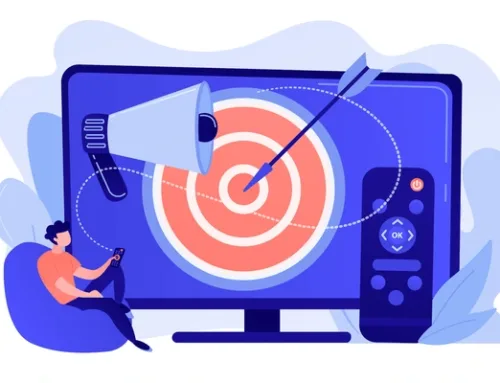Marketing to Generation Jones: A “New” Medicare Advantage Audience
As we step into 2025, planning for the next AEP is already underway. A critical part of this planning process involves understanding how the Medicare Advantage audience has evolved. Although the Baby Boom Generation has been the focal point for any brand targeting the Adult 65+ audience since 2011, the Boomers turning 65 in 2025 differ significantly from those who came 5 or 10 years prior. Marketers refer to them as Generation Jones, a demographic with unique values, preferences, and behaviors, particularly in media consumption. This shift makes marketing to Generation Jones increasingly important, as this group represents a new and distinct segment within the 65+ audience.
Generation Jones refers to the demographic cohort born roughly between 1954 and 1965, between the Early Baby Boomers and Generation X. The name “Jones” was chosen to represent the sense of longing or desire, which captures the mood of this group.
Members of Generation Jones grew up in a time of great societal change, experiencing the tail end of the post-World War II boom in the ‘50’s and ‘60’s (most associated with Boomers), while also facing economic struggles and shifts in culture occurring in the late ‘70s and early ‘80s. Their childhood saw the rise of television as the dominant medium, and the transition from analog to digital at home and in their workplace. This group is notable for being tech-savvy while still retaining a deep connection to traditional media, especially TV.
Why Traditional TV Works Well for Generation Jones
1. Deep Roots in TV Culture
Television was a central part of the lives of those in Generation Jones as they came of age. For many in this group, TV shows, news broadcasts, and advertisements were foundational to their daily routines. Unlike younger generations who have a more fragmented media diet, Generation Jones still holds a strong cultural attachment to traditional television. TV offers a sense of familiarity and reliability—qualities that resonate deeply within this demographic.
2. Strong Viewing Habits
While Generation Jones has embraced digital technology, many still prefer the passive experience of TV viewing. According to research, people in this group watch more TV on average than younger generations, and they are less likely to “cut the cord” in favor of streaming services. They often value the comfort of scheduled programming and are more likely to watch live TV, including news broadcasts, sporting events, and syndicated shows. This makes them an ideal audience for TV-based marketing efforts, as they are more likely to encounter advertising in real-time.
3. Trust in Television Advertising
A key advantage of traditional TV is its trustworthiness. Research shows that TV ads are perceived as more credible compared to ads on digital platforms. For Generation Jones, who grew up in an era when advertising was considered a reputable source of information, TV remains a trusted medium. Marketing on traditional TV can create a sense of authenticity, which is essential when targeting a demographic that is more likely to be skeptical of newer, less established forms of advertising like social media ads.
4. Higher Engagement with News and Current Events
Generation Jones is a demographic that values staying informed about the world around them. This group grew up in an era where news programs, talk shows, and special reports were staples of the TV lineup. As a result, they tend to engage heavily with TV news, especially during major events or crises. Brands can capitalize on this by running ads during news segments, where they are more likely to capture the attention of a highly engaged and attentive audience.
5. Receptive to Targeted Commercials
Contrary to the assumption that older generations are less receptive to targeted ads, Generation Jones has shown a growing appreciation for ads that align with their interests and needs. With TV’s ability to reach a broad audience, advertisers can use the medium’s targeting capabilities to focus on interests or demographics, such as age, income, or lifestyle, making TV ads an effective means of reaching Generation Jones with relevant messaging.
How to Optimize TV Advertising for Generation Jones
While traditional TV remains an effective way to reach Generation Jones, there are certain strategies that marketers can implement to make the most of this medium:
- Leverage Emotional Storytelling: Create narratives that tap into their values, such as family, nostalgia, and community, to create a deeper connection.
- Blend TV with Digital Strategies: While TV is still an essential part of the marketing mix, it should be combined with digital efforts for maximum impact.
- Select the Right Media Partner: The media team at Modus Direct has been managing TV campaigns targeting the 65+ audience for 15+ years and has the expertise to build your brand a strategic and effective media plan to achieve your brand’s goals.
The Bottom Line
Traditional television is far from obsolete when it comes to marketing to Generation Jones. In fact, TV remains a highly effective way to engage this demographic, who not only grew up with the medium but continues to trust and enjoy it today. Marketers who understand this group’s unique preferences, habits, and values can craft campaigns that resonate on a deeper level, ensuring that their message hits the mark.
As the media landscape continues to evolve, blending the reliability of traditional TV with the dynamism of digital platforms can offer a well-rounded strategy for brands looking to make an impact on Generation Jones. So, while newer channels may grab the headlines, the tried-and-true power of traditional television should not be overlooked.





